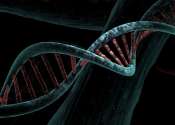Family denotes a group of people or animals (many species form the equivalent of a human family wherein the adults care for the young) affiliated by a consanguinity, affinity or co-residence. Although the concept of consanguinity originally referred to relations by "blood," anthropologists[who?] have argued that one must understand the idea of "blood" metaphorically, and that many societies understand 'family' through other concepts rather than through genetic distance.
One of the primary functions of the family is to produce and reproduce persons, biologically and socially. Thus, one's experience of one's family shifts over time. From the perspective of children, the family is a family of orientation: the family serves to locate children socially, and plays a major role in their enculturation and socialization. From the point of view of the parent(s), the family is a family of procreation the goal of which is to produce and enculturate and socialize children. However, producing children is not the only function of the family; in societies with a sexual division of labor, marriage, and the resulting relationship between two people, is necessary for the formation of an economically productive household.
A conjugal family includes only the husband, the wife, and unmarried children who are not of age. The most common form of this family is regularly referred to as a nuclear family.
A consanguineal family consists of a parent and his or her children, and other people.
A matrifocal family consists of a mother and her children. Generally, these children are her biological offspring, although adoption of children is a practice in nearly every society. This kind of family is common where women have the resources to rear their children by themselves, or where men are more mobile than women.









